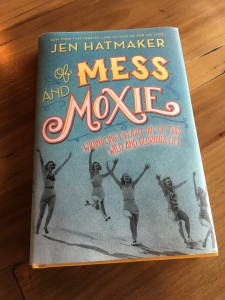When you are an avid reader, you often find yourself in the midst of big, deep, difficult questions, such as:
Can I let go of all other responsibilities today and just read?
Do I stop buying books, or do I start buying more bookshelves?
What on earth am I going to read next?
Other people will also ask you hard things, including the most challenging of all for a voracious reader:
What’s your favorite book?
I typically respond to that question with various questions of my own: What genre? Favorite as in inspiring or as in a gripping story or as in a thought-changer? Classic or contemporary? etc., then offer a top ten list of sorts. But at the end of each year, I do try to generate a short-list of favorites read that year – hence today’s blog.
A few disclaimers:
* This list includes only books I read for the first time in 2017 – so the excellent books we discuss in the ASPIRE Success Club, for example, are not included.
* I utilize a highly-specific and technical rating system to generate this list, involving a handwritten book journal and foil stars. 🙂

* I’m only including nonfiction books (which is what I mostly read) on this list, however I will share my fiction faves later this week on Instagram. (Side note: If you’re a book lover, let’s connect on Insta! I post most books I read [except the ones I dislike] along with a brief description of my thoughts and takeaways.)
OK, enough chit-chat – let’s dig into my 3 favorite nonfiction books of 2017:
Option B by Sheryl Sandberg and Adam Grant (Penguin Random House, 2017).
If you ask someone what to read next, how often do you expect them to recommend a book about navigating grief? Since reading Option B, I have actually done this often. Powerful, practical, and beautifully written, this book is a terrific resource for anyone who has ever experienced adversity or loss, or who may experience it in the future. It’s also invaluable for those wishing to support others through difficult times, such as family members, leaders, friends, and coworkers.
You can read my experience (and it truly was an experience) with this book here.

Of Mess & Moxie by Jen Hatmaker (HarperCollins, 2017).
When we discuss books in the ASPIRE Success Club, members frequently make two points: 1) “I wish I had read this when I was younger,” and 2) “Until reading/discussing this book, I thought it [whatever ‘it’ the book addresses] was just me.” I experienced both of these when reading this hilarious, heartwarming, insightful, and affirming book!
Hatmaker has the unique ability to make the reader laugh, cry, and say, “Oh my gosh, YES!” all within the same page. I actually didn’t highlight much in this one – it read so much like a story! – but one of my favorite lines:
“There is no scarcity in creativity… There is no such thing as too much wisdom and literature and story and craftsmanship. There is room for you.” (p99)

The Little Book of Hygge by Meik Wiking (William Morrow, 2017).
A surprise hit! I’ve been somewhat obsessed with Denmark ever since reading about its happiness factor in Dan Buettner’s book, Thrive (one of my 2012 favorite books, actually – learn more here). This quick little book shared the basics of hygge, marked by things such as candles, books, music, cozy quilts, warm socks. In a nutshell, “Hygge is about giving your responsible, stressed-out, achiever adult a break. Relax. Just for a little while” (p105). That’s exactly what I did when reading this book, and the feeling continued well after I closed the back cover.
You can read my reaction here (if the link doesn’t get you there, scroll down my Instagram feed to March 10, 2017).

As a literacy advocate, one of my favorite things to hear (and a big reason why I post books so often on Instagram) is someone saying they read a book because of my recommendation. If this list prompts you to read something new, please let me know! And feel free to share YOUR top books of 2017 below or on Instagram or Facebook. Happy Reading, friends!
Want to see my favorite books from the past several years? You can find them by year: 2016, 2015, 2014, 2013, 2012. Join us for incredible book discussions and much more in the ASPIRE Success Club!
![]() ?
?





 THANK YOU for an amazing 15 years that could not have happened without YOU! And do be sure to watch our posts and emails this week – if nothing else, I think you’ll get a chuckle! 🙂
THANK YOU for an amazing 15 years that could not have happened without YOU! And do be sure to watch our posts and emails this week – if nothing else, I think you’ll get a chuckle! 🙂







